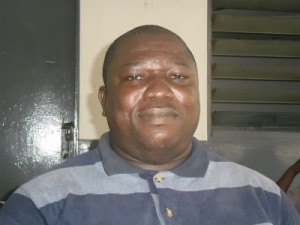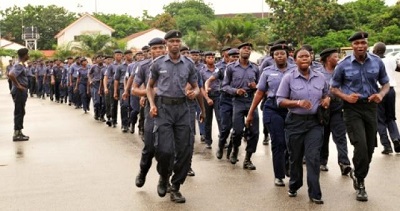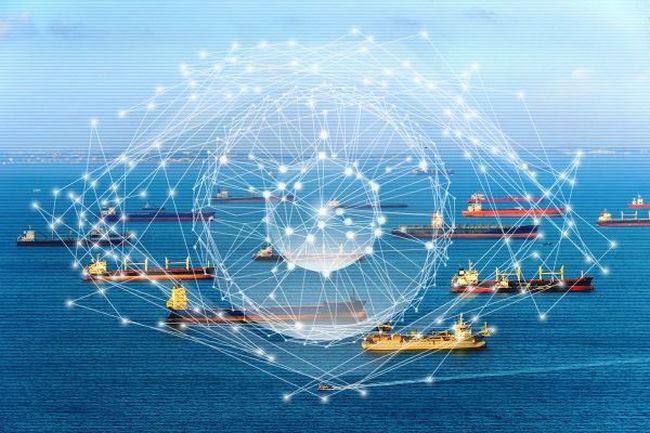Dynamics Of Human Capacity Building In The Maritime Industry

Dr Samuel Babatunde is the Registrar of Ports and Terminal Management Academy of Nigeria (POTEMAN). In this exclusive interview with MMS Plus Weekly, he features as your Shippers’ Guide and highlights the dynamics of human capacity building in the maritime industry. Read on.
What infrastructures are necessary in a maritime institution to meet up to international standard?
By International Maritime Organization (IMO) and the United Nations Conference on Trade And Development (UNCTAD) standard, there are three major infrastructures that must be in place, in a maritime institution and they are; human resources, material resources and financial resources.
Infrastructure includes the buildings, classrooms and a library where students can research because an academy is a research driven institution where people can research and compile activities to form a theory or verify existing theories. The human resources are the intellectual attribute of well trained professionals who are involved in the prospect of educating students as far as the maritime environment is concerned.
What are the different areas of the maritime industry operations?
The maritime industry is subdivided into three the shipping industry, the logistics or supply chain industry and the ports and terminal industry. There should be a synergy between the three subdivisions because one cannot work without the other, the three must be in harmony.
That is why some multinational organizations who understand the basic principles of the three subdivisions, try to capture the control of the different divisions in their operations to avoid hiccups because each cannot work without the other in the maritime industry.
In the area of financial resources, this can be viewed from the perspective of customization, that is, the institution should know whether it is to provide workforce for services of the terminal operators, the services of the shipping lines, or the services of logistics providers and from this perspective, develop human capacity to meet up with the needs of the industry.
We must understand that the maritime industry has a derived demand, it is not needed for itself, it is needed to satisfy a need because when goods are produced, those goods will not be consumed in that particular place, it will require shipping transport by water because it has been clarified that shipping remains the cheapest means of transporting goods internationally.
When these goods are moved, it comes to the terminal which is the ports and from there it is transported to the various warehouses. Likewise, finished goods have to pass through the same processes, in form of export. So there needs to be synergy between the three arms of the maritime industry to ensure efficiency in ports operations.
The Nigerian Maritime Administration and safety Agency (NIMASA) has said that 50,000 seafarers are needed if the industry is to achieve its full potential, do you agree with this?
As a trainer I disagree, on several functions that I have met NIMASA, either in training capacity or in seminars and workshops, there is no statistics to back up that assertion, we have trained people producing cadets at Maritime Academy of Nigeria (MAN), Oron; African Academy and the Star Maritime Academy, where is the work for them to do? Some of them are working as freight forwarders, ship chandlers and what have you, they are not into core shipping.
Meanwhile, we need to understand that it is foreign ships that ply Nigerian routes and as long as the trend continues we cannot place our crew on board any of them and until we can get our national carriers working it will be hard to place graduates from our academies on board vessels.
The National Seafarers Development Program (NSDP) is ongoing, what purpose was it designed for?
The trainings are subdivided into three, we have what we call core training, complementary training and supplementary training. As much as the NSDP programme is laudable, it did not include Nigerian maritime academies. Those who conceived the idea wanted to have a kind of pool of well trained Nigerian workforce of seafarers and maritime professionals, so that they can become experts who can work internationally and locally.
So, by building capacity in human development through the NSDP, which involves sending Nigerian students abroad to study different areas of modern maritime development, we can have people who are well trained and can work in that capacity. That is the main objective.
What role does the government play in equipping maritime academies in Nigeria?
In as much as the government may have good intentions, less investment has been done in capacity building. I have been opportune to have a one on one interaction with NIMASA, they do a lot of internal capacity building but little industry based capacity building.
In planning, we have planning for and planning with. In planning for, you just design a programme and make it available for people to use it, but in planning with, you assess the needs of the people and based on these needs, you make provision on how to adequately supply these needs, then the academies can be able to meet their targets.
Coming back to NIMASA, years back it introduced what we call entrepreneurship practice. It was organized for the people in the industry about 6 years ago. NIMASA Organized an entrepreneurship training in conjunction with Small and Medium Scale Development Agency of Nigeria (SMEDAN) where Nigerians were picked from the industry, camped at Eko Hotel with their phones removed, so that they can build them on how best to run their businesses.
A number of Nigerians come into the business of shipping without having the slightest knowledge of how to run a business. They assume that because they have worked in big companies, take John Holts for instance. When they leave John Holt after some years, they don’t have the slightest orientation on how to become an employer.
They set up a company and start running it, with the thinking that they can get it right. They cannot get it right because they do not understand the principles of running a business, they don’t even have much experience.
But just because they came into some cash, they get an office, get a secretary, clerk and supervisor and then they start an on the job training and most times they get it wrong because there is no laid down background on how to survive in the business world.
No specific knowledge of the model to apply in any section of their business and that is how most Nigerian businesses started. For example, in shipping, there is a concept called shipping consortium, it is the coming together of people plying the same route intellectually, to pull their resources together and finance a business.
We need to have a maritime consortium in Nigeria because everybody cannot be a managing director or chief executive officer, we need to pull our resources and ideas together and jettison the idea of chairman, managing director and so on.
How many students does POTEMAN admit yearly and what are the requirements for a student to get admission into the academy?
It varies year after year when we started we had 72 intakes, the subsequent year we had less than that, the graph is not a straight line at all, it has been fluctuating depending on the needs of the port and terminal industry. Apart from training and capacity building, we also have collaborative programmes with Global Maritime Academy among others.
The requirements also varies because we have different levels, there is the certificate programme, diploma programme , joint diploma programme, post graduate programme and masters programme. So it is the level that you want to register for that will determine the requirement and duration.
Like the certificate programme, for instance, the minimum requirement is the West African Examination Certificate (WAEC), with five credits including English and Mathematics and other subjects, preferably geography since the maritime industry has to do more with geographical regions, w e are talking about movement of goods globally.
An understanding of a bit of geography will make the study easier because we are talking about movement of goods, the student needs to understand where these goods are produced, shipped to and where they are consumed, known as origin/destination matrix of the maritime industry.
How do you make sure that your graduates get placements in the ports?
Our work force has easy placement as far as the ports and terminal industry is concerned because the chairman of the academy is a terminal operator, in the person of Barr. Taiwo Olayinka Afolabi , he is the Chie Executive Officer (CEO) SIFAX Group. With his help our work force which includes ship chandlers , yard operators, safety and security personnel, marketers, stevedores, tally clerks etc, are able to get jobs at the terminal.
What can the government do to improve maritime studies in Nigeria?
NIMASA should pay less attention to training their staff and concentrate more on training maritime lecturers, if they are sincere about building our academies and the industry. NIMASA also has to come up with a white paper. In the secondary schools today, there is what is called the WAEC curriculum and irrespective of where you are whether in the east, west or north the WAEC curriculum applies and it is uniform. That is the standards of measurement that is used to evaluate education at that level.
The maritime education in Nigeria lacks a curriculum. There is no well-equipped library for industry use and for research, the one that NIMASA has, there are a lot of protocols you must pass through before you can be allowed access to use it, because it was not designed for the industry but for their staff.
The government should stop their attitude of relegating private maritime institutes to the background, instead they are supposed to help these academies to grow by providing them with funds which they do not have. They cannot access loans through the banks because of the stringent conditions of banks.
After training the students there are no jobs for them, so there is a missing link. The government should come up with a well thought out plan on how to assist these institutes, once they can ascertain the genuinely registered ones through their Certificate of Incorporation from the Corporate Affairs Commission (CAC) and perhaps do a physical inspection of these schools and their offices, the government should see their needs and plan with them based on their individual needs, and resolve to help them and I can assure you that these academies can compete with any academy in any part of the world.
How much is the salary of the personnel employed by terminal operators?
Some of them are mangers and assistant managers, however, the lower level staff are paid nothing less than N30, 000 or N40, 000 a month.








